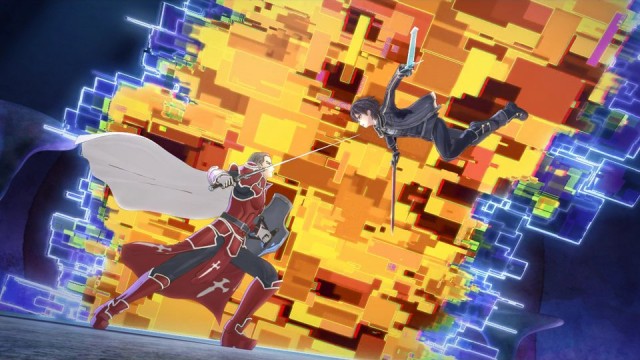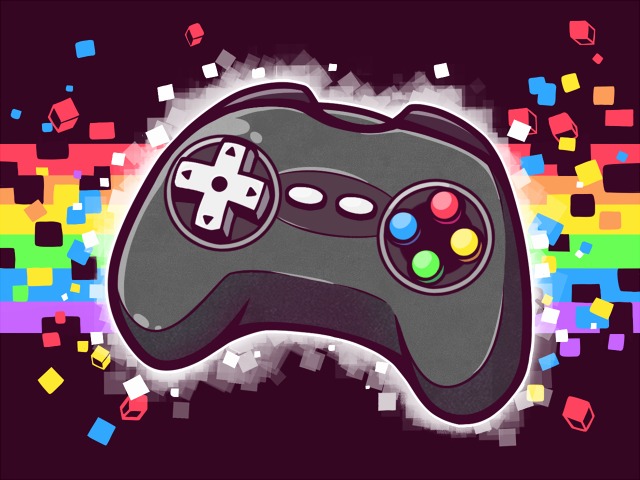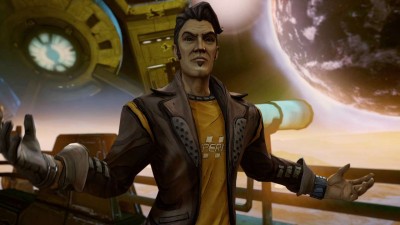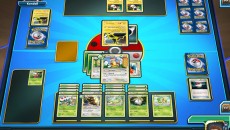When a form of entertainment jumps between mediums its fair to say that most of the time it marks a dip in quality – think of the Prince of Persia movie, or the terrible 1993 Super Mario Bros. movie. Sword Art Online: Hollow Fragment, which was originally a light novel-turned-manga-turned- anime, is no different. That’s not to say that it’s bad – it’s actually a rather entertaining videogame if you persevere through all of its niggles and rough edges; but the things that I enjoy most about it are things that can survive outside the videogame model such as the music or the entertaining cut scenes.
 It’s important to note at this point that I have never seen or read any other Sword Art Online material before playing this game, so some of the blatant fan pandering (like the pointless and often annoying romance system) had no effect on me at all. So I came to the game with no expectations, no knowledge of the characters or their history. I came to it solely as a gamer, and it’s on that basis alone that this review has been written. That’s a little disclaimer there, in case fans grab their pitchforks.
It’s important to note at this point that I have never seen or read any other Sword Art Online material before playing this game, so some of the blatant fan pandering (like the pointless and often annoying romance system) had no effect on me at all. So I came to the game with no expectations, no knowledge of the characters or their history. I came to it solely as a gamer, and it’s on that basis alone that this review has been written. That’s a little disclaimer there, in case fans grab their pitchforks.
Sword Art Online: Hollow Fragment is a role-playing game developed by Bandai Namco exclusively for Sony’s PlayStation Vita. It’s the second game adaption in the series, following on from Sword Art Online: Infinity Moment. Hollow Fragment was originally released in Japan earlier this year, before seeing a release on these shores back in August. It’s important to know it was first released in Japan, because one of the things that Sword Art Online: Hollow Fragment (SAOHF) suffers from is some pretty bad localization, and it reared its head early on in a cutscene, when the dialogue “Did I… defeated him?” popped up.
Oh boy.
A few moments later the poor localization struck again. While I was taking part in a cringe worthy relationship scene involving the main character, Kirito, and a friend of his in a restaurant. “I’ll gladly put with love ketchup on omelet rice for my master” had me scratching my head. But I pressed on, and once you start to move past the rough presentation, the game starts to reveal little nuggets of joy.
The plot, in a brief summary, revolves around people who are engrossed in a realistic MMO world that makes use of advanced technology (think Oculus Rift on steroids) to transport the player to a fantasy world. The players later find out that they can’t log out and that if their HP reaches zero they die in real life. The only way to leave the game is to finish its 100 levels – apparently.
The story is centered around an MMO world so it’s no surprise that the developers took the time to make it feel like you, as the player, are playing an MMO. You’ll see friends lists, crafting, instances, quest giving NPC’s, guild pages, player merchants, grinding, character stats, a ton of items and even more skills. You really do feel like you are playing an MMO. I realize that a single player MMO may sound terribly boring to some, but it isn’t – the developers made sure of that. I like to describe it as a kind of World of Warcraft meets Monster Hunter meets Devil May Cry hybrid in that the general feel and progression system is MMO-esque with all the leveling up, guild “raids,” items, and skills you could grind through. However, the combat is much more fast paced and focused on action - provided you know what is going on as the tutorials are unbelievably confusing with a lot of information is thrown at you at once.
The action buttons are standard with your main actions mapped to the Vita’s face buttons. Circle is a standard attack, X is a dash, Triangle is a parry and Square is a stun. To make use of the plethora of other skills at your possession SAOHF  makes use of the L and R shoulder buttons in a fashion similar to the way Final Fantasy XIV: A Realm Reborn (coincidentally an MMO) deals with it’s skills on console. If you hold the L shoulder button two palettes pop up for the directional keys and for the shape keys. You then use the directional keys to order your party member with commands such as wait, defend, guard or stop and the shape keys are used to make use of aggressive weapon skills. Holding the R shoulder button does the same but this time the party member commands consist of different orders like heal, switch position, use skill and praise while the combat commands include buffs and heals. All of these combat palettes can be swapped and rearranged to your liking and the result is a personalized combat system that feels fluid and exciting.
makes use of the L and R shoulder buttons in a fashion similar to the way Final Fantasy XIV: A Realm Reborn (coincidentally an MMO) deals with it’s skills on console. If you hold the L shoulder button two palettes pop up for the directional keys and for the shape keys. You then use the directional keys to order your party member with commands such as wait, defend, guard or stop and the shape keys are used to make use of aggressive weapon skills. Holding the R shoulder button does the same but this time the party member commands consist of different orders like heal, switch position, use skill and praise while the combat commands include buffs and heals. All of these combat palettes can be swapped and rearranged to your liking and the result is a personalized combat system that feels fluid and exciting.
The in-game visuals, which are your pretty standard 3D anime styled reminiscent of games like Fiesta Online, are nothing to write home about and don’t exactly make the jaw drop. However, they do their job and deliver the game world in an acceptable manner – with the only draw back being that occasionally when the screen is full of people and monsters, the frame-rate dips a bit. The music isn’t exactly intuitive either and mainly consists of a pleasantly composed mix of orchestral and synthetic sounds. The CGI cutscenes, used to convey most of the important plot points, are a whole other story. The cutscenes are delivered in crisp and adrenaline pumping pre-rendered animated format and are probably one of the highlights of SOAHF. The audio is in Japanese with English subtitles - which some anime purists would say is better - and this doesn’t detract from the experience at all.
Over all Sword Art Online: Hollow Fragment successfully does what it set out to do. It’s the culmination of a whole bunch of minor design faults that ultimately spoil the fun, such as using X for cancel and Circle for accept, and I get that this is a normal JRPG thing but if you’re porting it to westerners maybe this should at least be re-mappable. There is also the puzzling decision to have stats highlighted in red mean an improvement in an item which isn’t the case in most other games. Coupled with the terrible localization and annoying fan focused romance system, which isn’t really a system at all but a set of extra dialogue for each partner that is forced upon the player that more often than not leaves you mashing the okay button to speed through the awkward conversation scenes. The character creation at the start is also a point of confusion as the cut scenes still use the default character model and the NPC’s still call you the default Kirito. Slowly the list of minor faults grow until eventually it leaves the player feeling a bit drained.
That doesn’t mean that Sword Art Online: Hollow Fragment isn’t worth picking up, however - it just has enough flaws to make it solely for fans of the series rather than everyone. Every now and then the enjoyable gameplay manages to shine through the looming shadow of its various faults and when it does, it shines bright – the combat is fluid, the pre-rendered cutscenes are gorgeous, and the vast amount of items makes for a loot hunters’ heaven. If you have a PlayStation Vita and have some spare cash, give it a a whirl, there’s a chance you may lose 60 or more hours of your life to this faux MMO.









